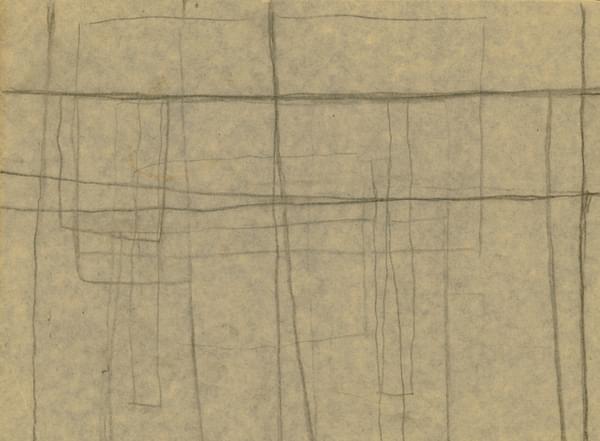Benbecula
William Scott
The evocation of memories and experiences of a place became a significant leitmotif in Scott’s oeuvre, especially in his resonating abstracts. In 1960 Scott met Stanley Jones, the master printer of London’s Curwen Studio, who was to take Scott’s printmaking in rewarding new directions. Jones showed Scott how he could explore the medium of stone lithography in unexpected ways, and Scott was fascinated. They made the print Arran that year, and Scott made a larger editioned Iona on the continent a year later. Together though, in 1962, Scott and Jones embarked on an ambitious series of five abstract lithographs apparently inspired by other Hebridean Islands : Barra, Benbecula, Jura, Mingulay and Scalpay . During this part of the series, Scott truly seemed to get to grips with his medium. His stimuli, on this occasion, were at least partly physical – before living in Ireland the first few years of Scott’s life had been in Scotland, although he remembered his early childhood with little fondness. It was “a grey…austere world”, he said, but a place nonetheless that would at times inform his work with its sombre ties. As far as is known, Scott never actually visited any of the islands in the series, and his evocations are often progressions of already developing themes in his work, flavoured by the idea of a place. Titles often seem secondary in Scott’s work, although “once these references are attached, they are difficult to ignore” .
Jones recollects this time in the studio with fondness; Scott, he said, was “serious and reserved, but nonetheless warm”, and “his application in the studio was impressive, industrious”. Scott, unlike other artists of his stature, would leave what he was doing without complaint to help others struggling to move the large and incredibly heavy rolls of paper that were delivered to the studio, and with this friendly attitude he was a welcome visitor to the Curwen. Together, Scott and Jones would try many experiments at proof stage, and there was no traditional formality to the way they approached their work. On some of these Scottish Island prints Scott’s beautiful designs were formally worked out on paper prior to starting on the stone, Benbecula being a noteable example, and Jones then advised Scott on how best to create unusual and beautiful textures with each colour. Lithography, according to Jones, was particularly suited to “gestural” artists such as Scott.
Benbecula
William Scott
- Artist
- William Scott (1913-1989)
- Title
- Benbecula
- Medium
- Lithograph
- Date
- 1961-2
- Sheet
- 57.4 x 82.0 cm: 22 5/8 x 32 1/4 in.
- Image
- 49.5 x 61.9 cm: 19 1/2 x 24 3/8 in.
- Edition
- From the edition of 75, signed and numbered by the artist
- Printer
- Stanley Jones for Curwen Studio
- Publisher
- Curwen Prints, London
- Literature
- Archeus 14
- Reference
- C13-15
- Status
- Sold
CURRENTLY UNAVAILABLE
Available Artists
- Albers Anni
- Andre Carl
- Avery Milton
- Baldessari John
- Bell Larry
- Brice Lisa
- Crawford Brett
- Dadamaino
- Dávila Jose
- de Tollenaere Saskia
- Downing Thomas
- Dyson Julian
- Francis Sam
- Freud Lucian
- Gadsby Eric
- Gander Ryan
- Guston Philip
- Haring Keith
- Held Al
- Hockney David
- Hui Zhang
- Kapoor Anish
- Katz Alex
- Kelly Ellsworth
- Knifer Julije
- Kusama Yayoi
- Le Parc Julio
- Leciejewski Edgar
- Léger Fernand
- Levine Chris
- LeWitt Sol
- Lichtenstein Roy
- Maripol
- Martin Agnes
- Martin Jason
- Martin Kenneth
- Mavignier Almir da Silva
- Miller Harland
- Morellet François
- Motherwell Robert
- Nadelman Elie
- Nemours Aurélie
- O'Donoghue Hughie
- Pettibone Richard
- Picasso Pablo
- Prehistoric Objects
- Prince Richard
- Quinn Marc
- Riley Bridget
- Ruscha Ed
- Scott William
- Shrigley David
- Smith Anj
- Smith Richard
- Smith David
- Sonnier Keith
- Soto Jesús Rafael
- Soulages Pierre
- Taller Popular de Serigrafía
- The Connor Brothers
- Turk Gavin
- Vasarely Victor
- Warhol Andy
- Wesselmann Tom
- Wood Jonas
- Wool Christopher

